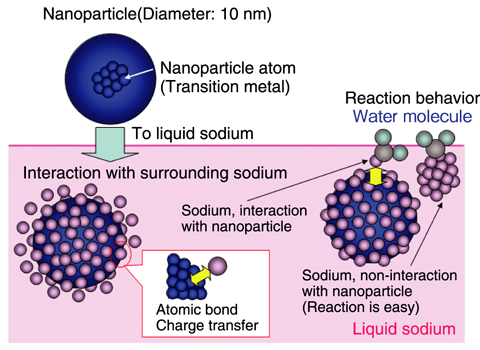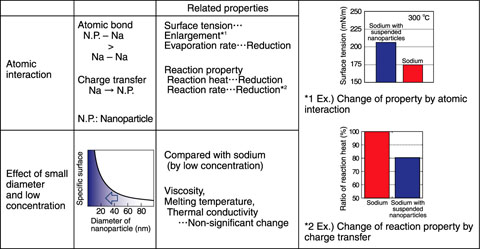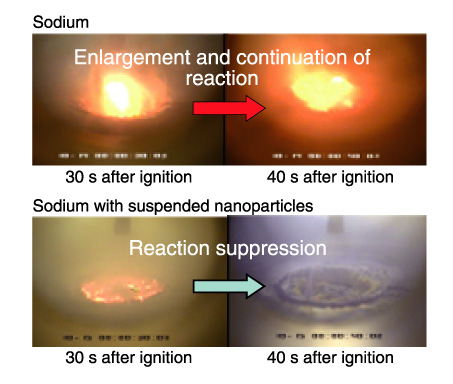
Fig.1-29 The concept of sodium with suspended nanoparticles
Table 1-1 Characteristics and changes in the properties of sodium with suspended nanoparticles


Fig.1-30 Comparison of combustion behavior between sodium and sodium with suspended nanoparticles
Liquid sodium, which is the coolant for the FBR, possesses high thermal conductivity and superior thermal hydraulic properties. However, it also possesses a high chemical reactivity with water or oxygen. For these reasons, satisfactory FBR plant safety is assured based on safety facilities and component design. However, if the reactivity of the sodium itself can be suppressed, it can be expected that safety can be improved independent of the facilities themselves, and that the plant can be made more economical by simplification of the facilities. In this study, we take on the challenge of creative technological development to control the chemical reactivity of sodium itself.
The concept behind this study is shown in Fig.1-29. An atomic interaction (atomic bond and charge transfer) forms between a nanoparticle and the surrounding sodium atoms when nanoparticles are suspended in liquid sodium, and it has become clear that the reactivity of sodium is suppressed by this atomic interaction. Thus there is a possibility that control over reactivity can be achieved without loss of the superior thermal hydraulics demanded of the FBR coolant, because a large amount of atomic interaction can be expected even with a low quantity of nanoparticles, if the diameter of the nanoparticles is smaller and their specific surface area is enlarged.
The charge transfer to a nanoparticle from the surrounding sodium atoms and enlargement of the atomic bond became theoretically clear in a previous study, and the change in the physical properties by the atomic interaction was verified experimentally (the upper part of Table 1-1). Furthermore, the physical properties of sodium with suspended nanoparticles, such as thermal conductivity, melting temperature, and viscosity, were measured and compared with those of sodium to clarify the influence of a small diameter and low quantity of nanoparticles on the thermal hydraulics, as a result of which it was verified that there was no significant change in these properties, and no change in the FBR thermal hydraulics performance (the lower part of Table 1-1). Also, the influence on sodium impurity control was investigated, and the concentration of nanoparticles in sodium did not change before and after trapping impurity elements. From this result, we can predict that the nanoparticle method can be applied to existing process. Moreover, the reactivity control effect in the reaction of water or oxygen and sodium with suspended nanoparticles has been verified, and results with respect to reduction of reaction heat and reaction rate have been obtained (Fig.1-30). In the future, a reactivity control mechanism will become clear, the applicability of this technology to the FBR coolant will be evaluated and the reactivity control effect under FBR operation will be verified, and the applicability of sodium with suspended nanoparticles for practical use will become clear. Furthermore, this kind of technology that uses atomic interactions with the nanoparticle surface is expected to not only control the chemical reactivity of sodium, but can also be applied to improving the properties of other mediums.
The present study is part of the contract research “ Development of liquid sodium chemical reaction suppression technology based on nanotechnology ” from the Ministry of Education, Culture, Sports, Science and Technology of Japan (MEXT).
<Previous: 1-11 | Next: 2 Research and Development on Geological Disposal of High-Level Radioactive Waste >